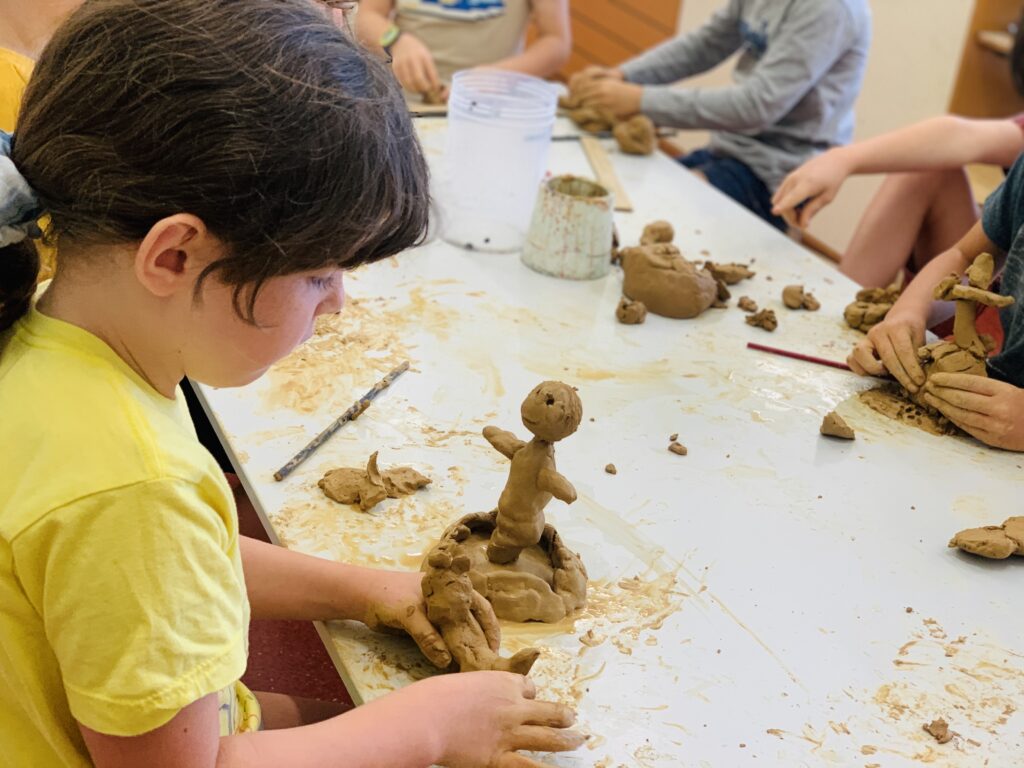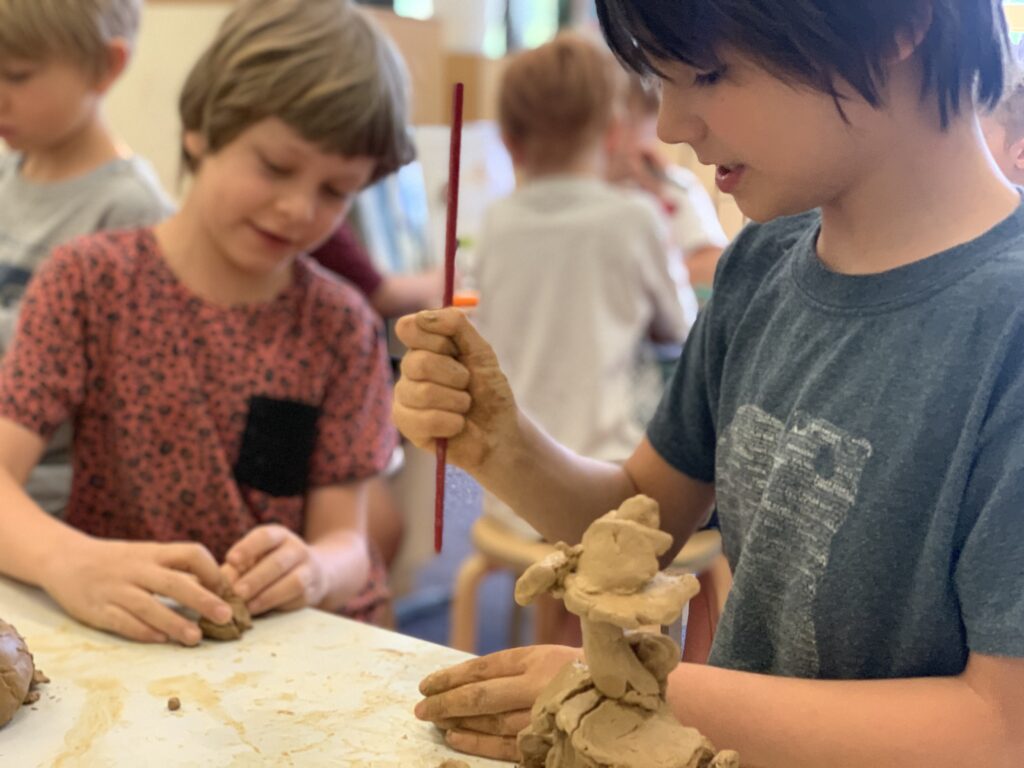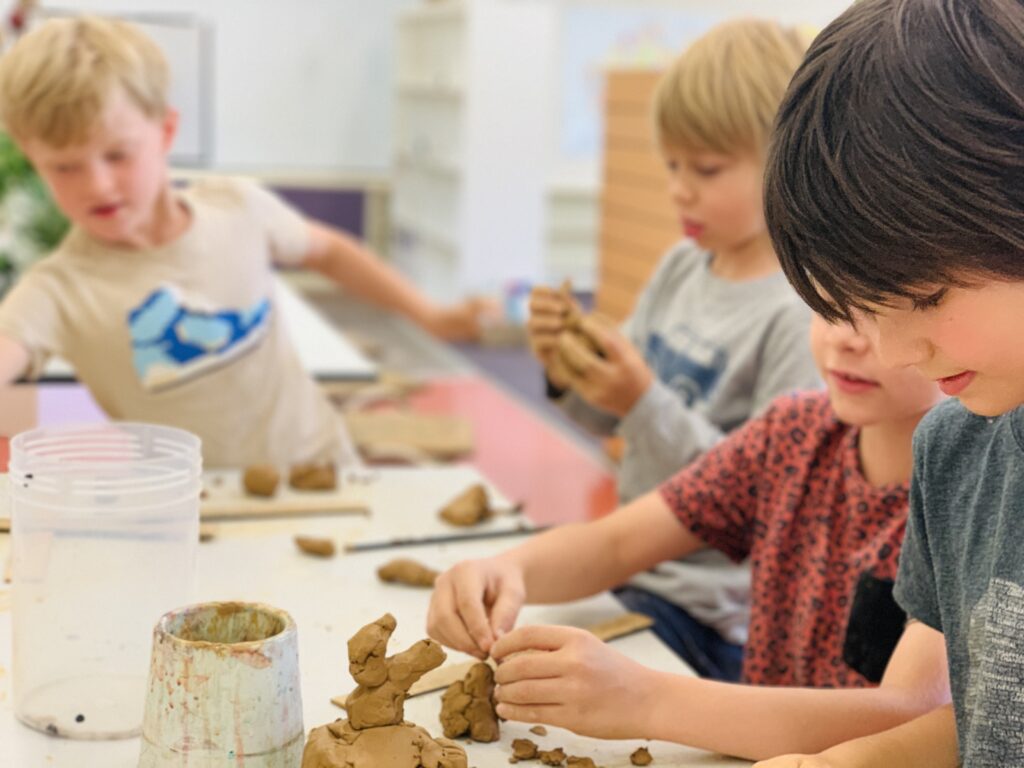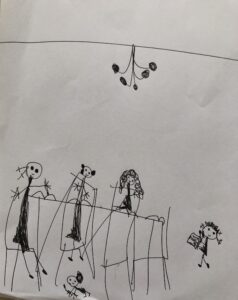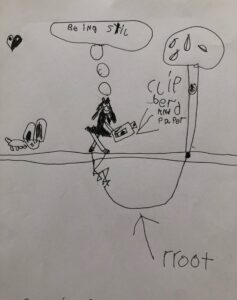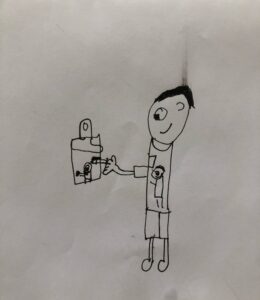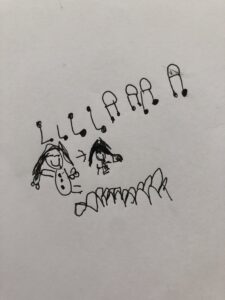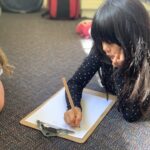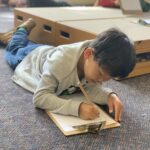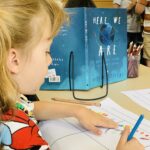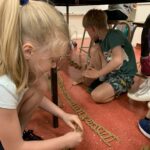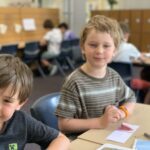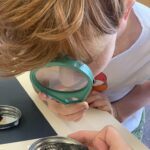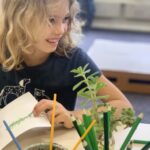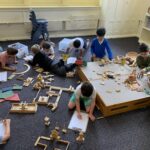These are big numbers, how are we going to measure them! – Kiko
We need a plan, why don’t we change them to 1 million = 1 cm and use the big rulers? – Oscar
Inspired by the Number Talks that were created during Remote Learning the year 1/2 students are developing a real connection to mathematical thinking and how it can be applied in everyday life. The students have continued to conduct Number Talks in their home groups and have been documented using place value to count large numbers during construction and sharing their understanding with each other.
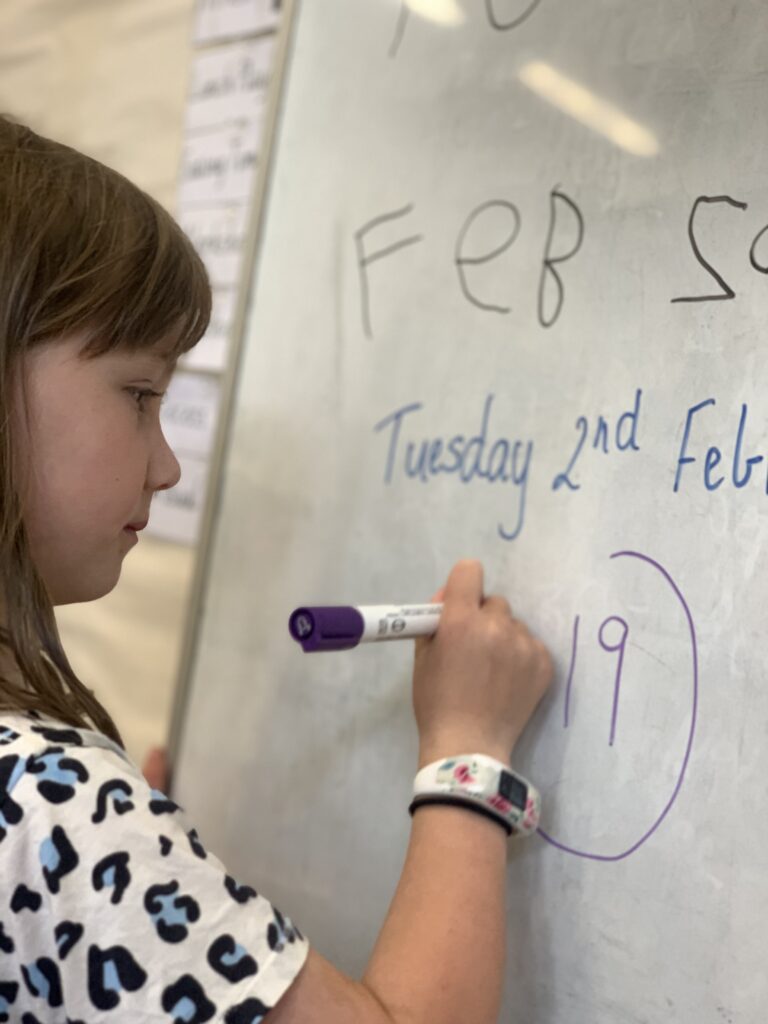
Homegroup Number Talk 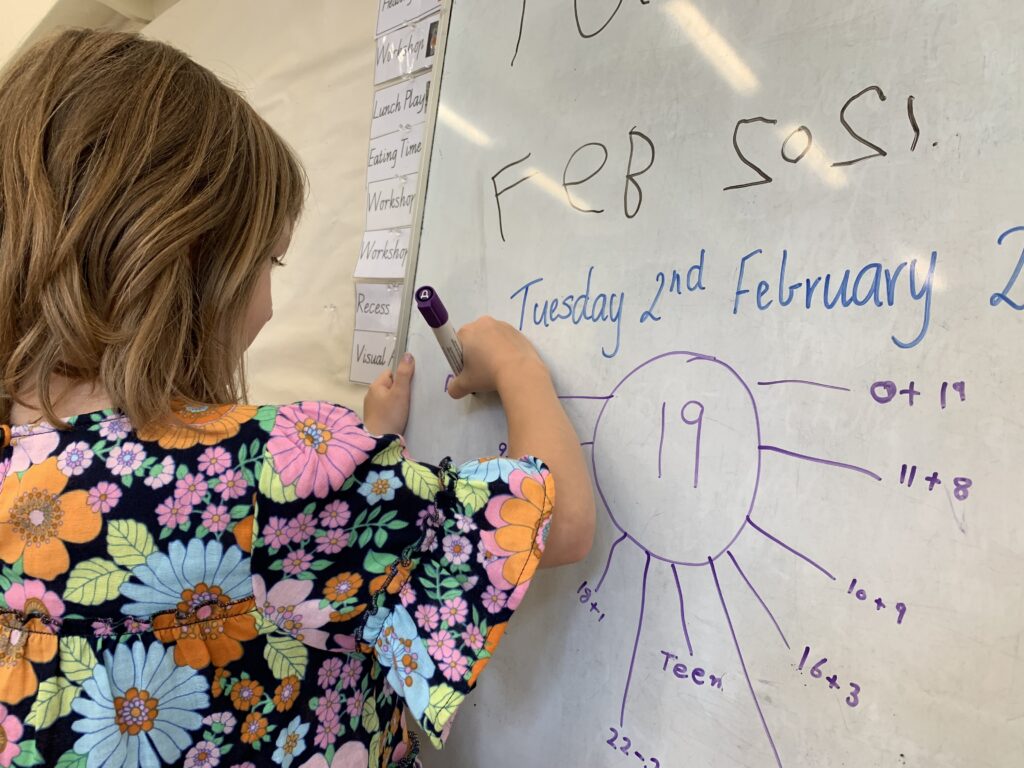
Number Talk 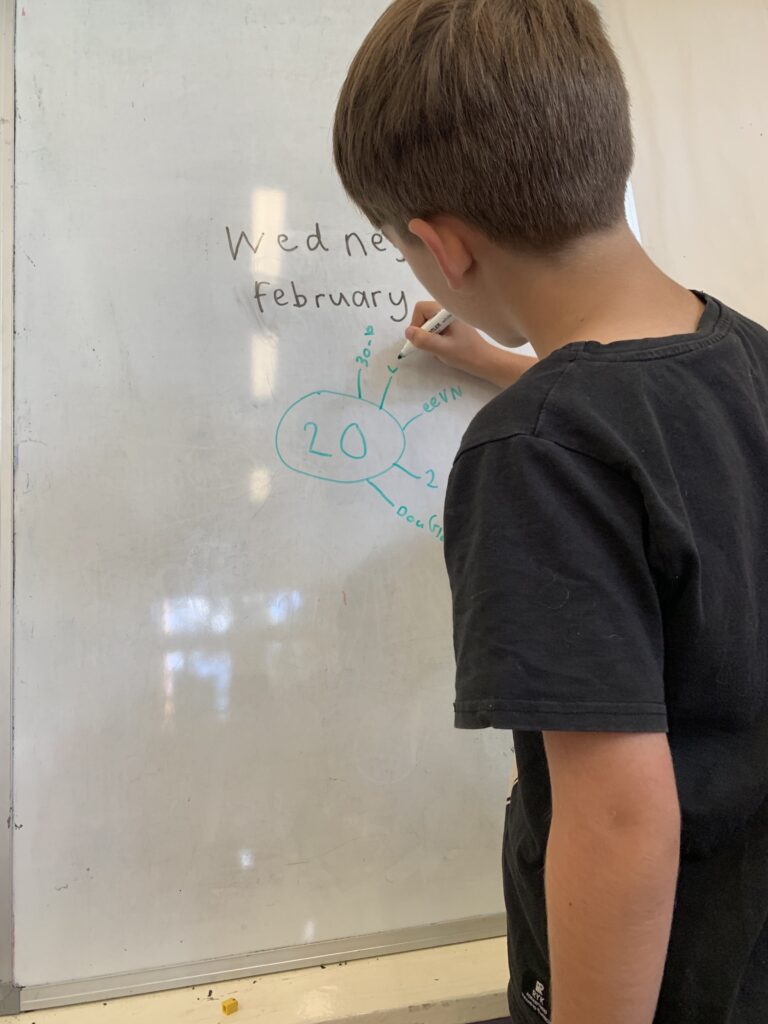
Number Talk 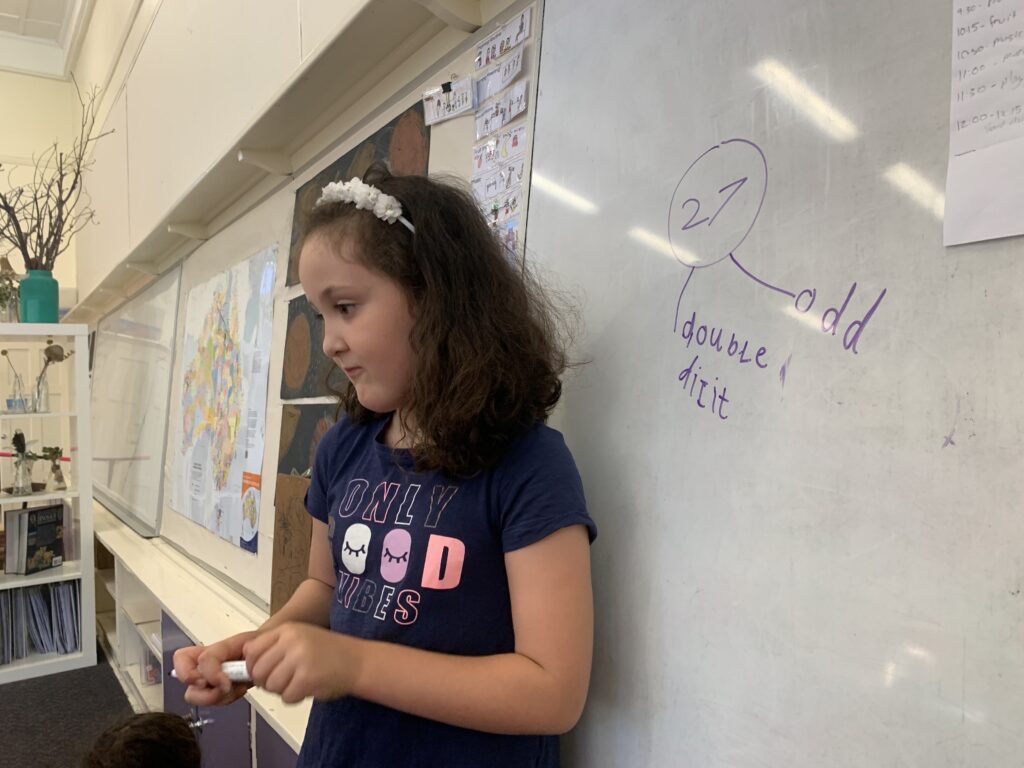
Waiting for information 
Writing information
In the performance space students have been exploring the idea of measurement and scale. Mapping out the solar system by developing a scale to assist them in placing the planets at their correct distance. This provocation has allowed for the students to demonstrate their knowledge of measurement, collaboration and documentation. Students used meter rulers and tape measures to measure the distance between each planet using Oscar’s scale of measurement 1million km = 1 cm. While exploring Oscar’s theory the group discovered that if they were to complete the solar system correctly some planets would need to be placed far away on the west basketball court. So the group has begun to discuss other ways they could represent the solar system in our neighbourhood. The students have organically started to document their discoveries through writing on clipboards and now have challenged themselves to work together to create their own documentation to share their discoveries with the neighbourhood.

Using MAB to count 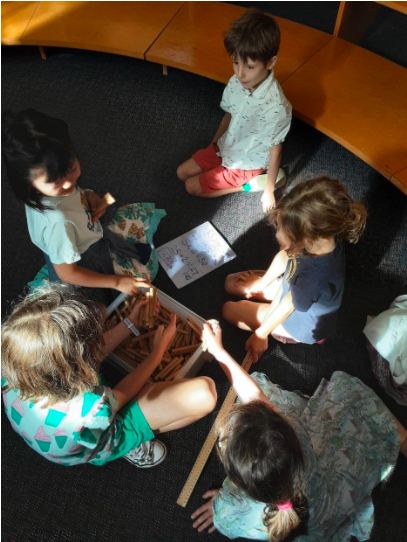
Working as a team 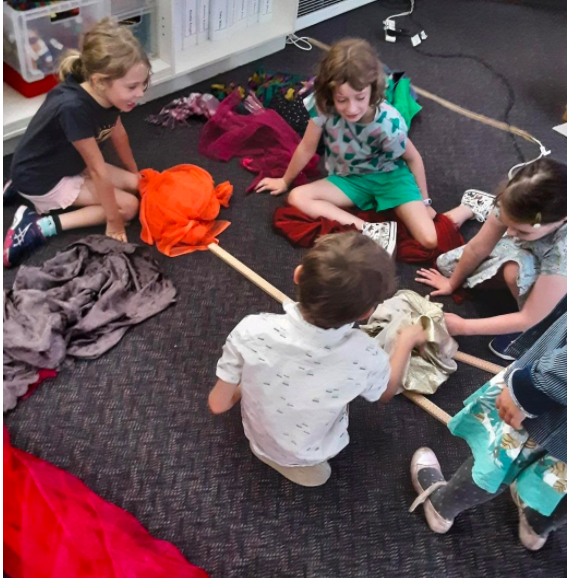
Here is the sun 
Maths to workout the distance 
Oscar’s scale information
The mathematical energy coming from the performance space during provocations seems to have travelled successfully into other parts of the neighbourhood. Students have been challenging each other with simple and complicated equations working together and sharing their different methods for solving problems.
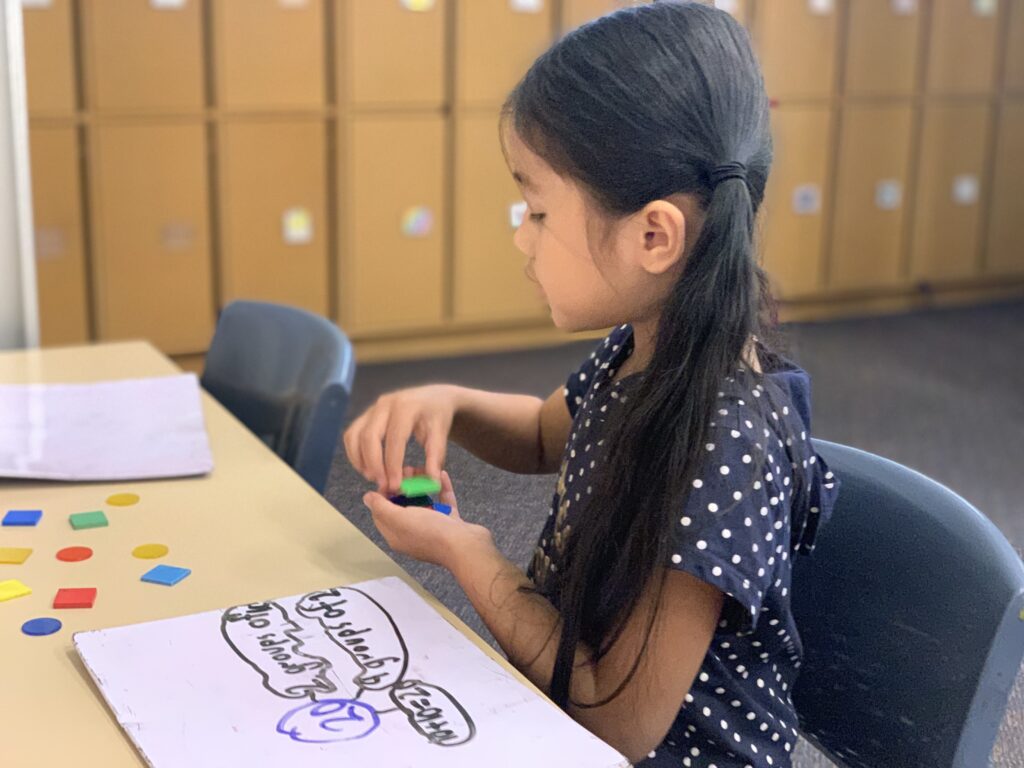
Counting and recording 
Sharing theories 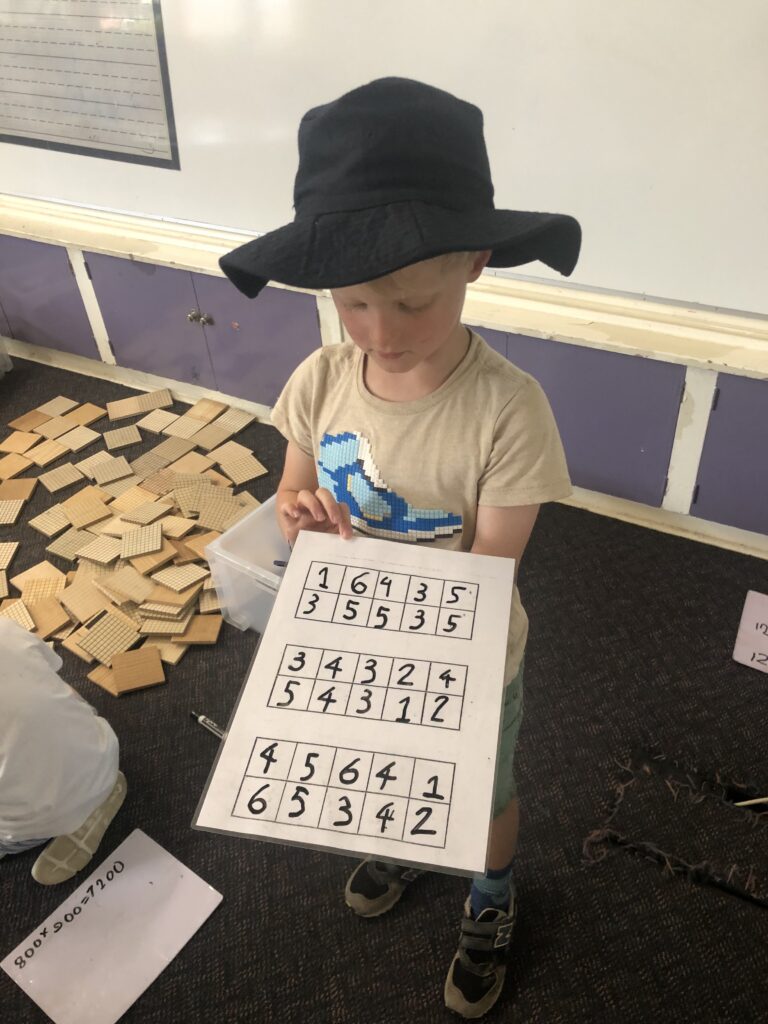
Finn practicing his numbers 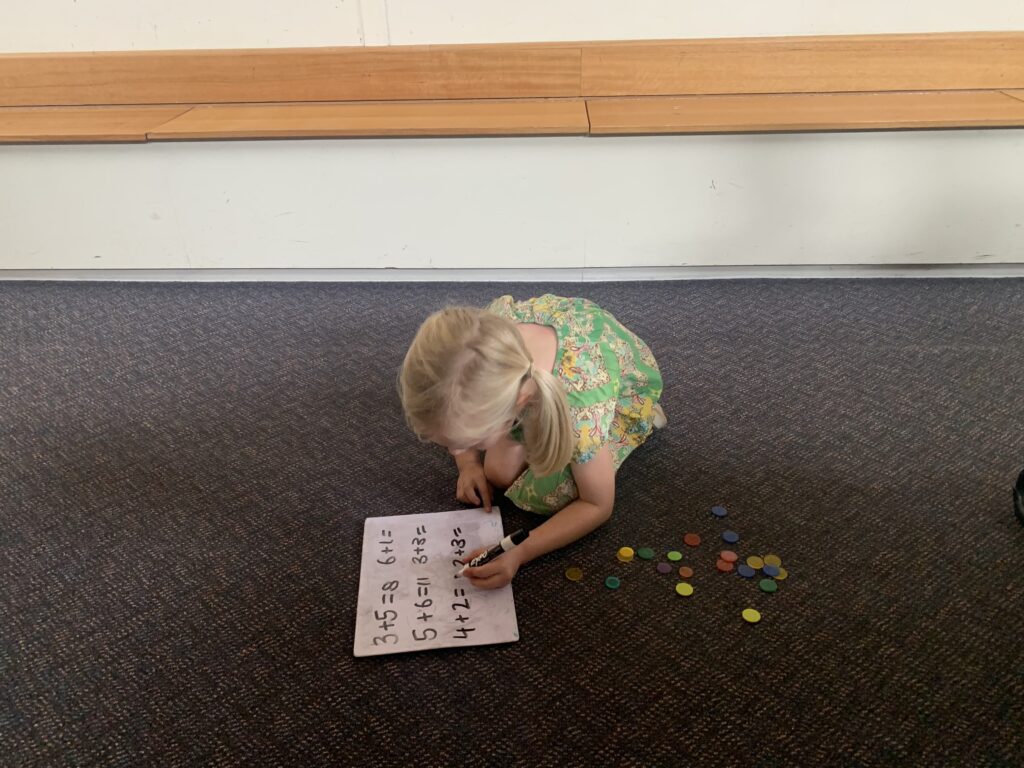
Lulu doing some counting 
Using MAB to count
Our mathematical targets and workshops have been a buzz with new mathematical thinking, understandings and processes. A particular provocation and workshops that challenged the students thinking was the Kitchen Maths that focussed on capacity and estimation.
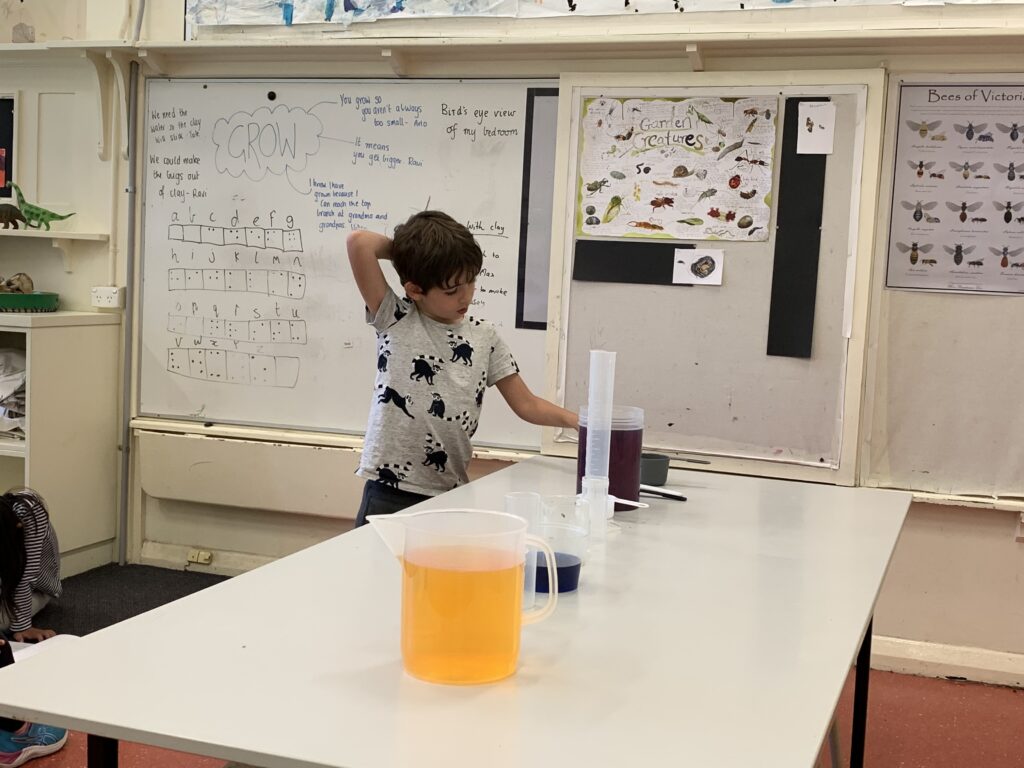
Estimating Capacity 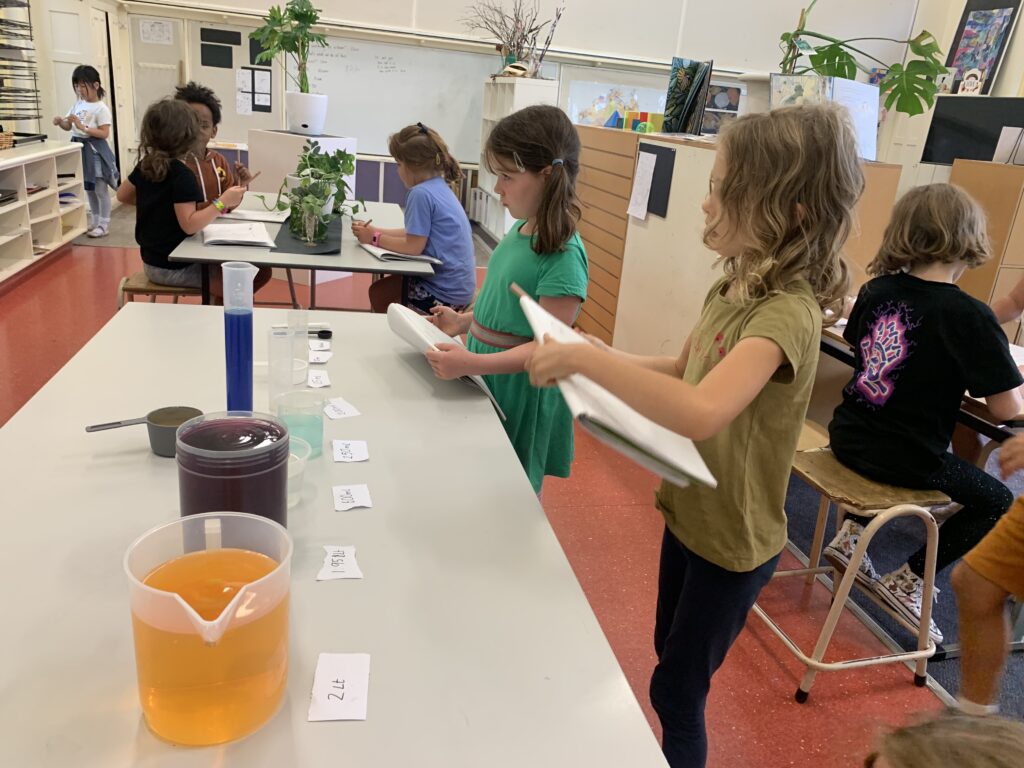
Capacity 
Capacity Estimation
We are looking forward to expanding on our ideas through upcoming workshops and provocations. We envisage the introduction of the western and indigenous seasons and their connection to mathematics.
